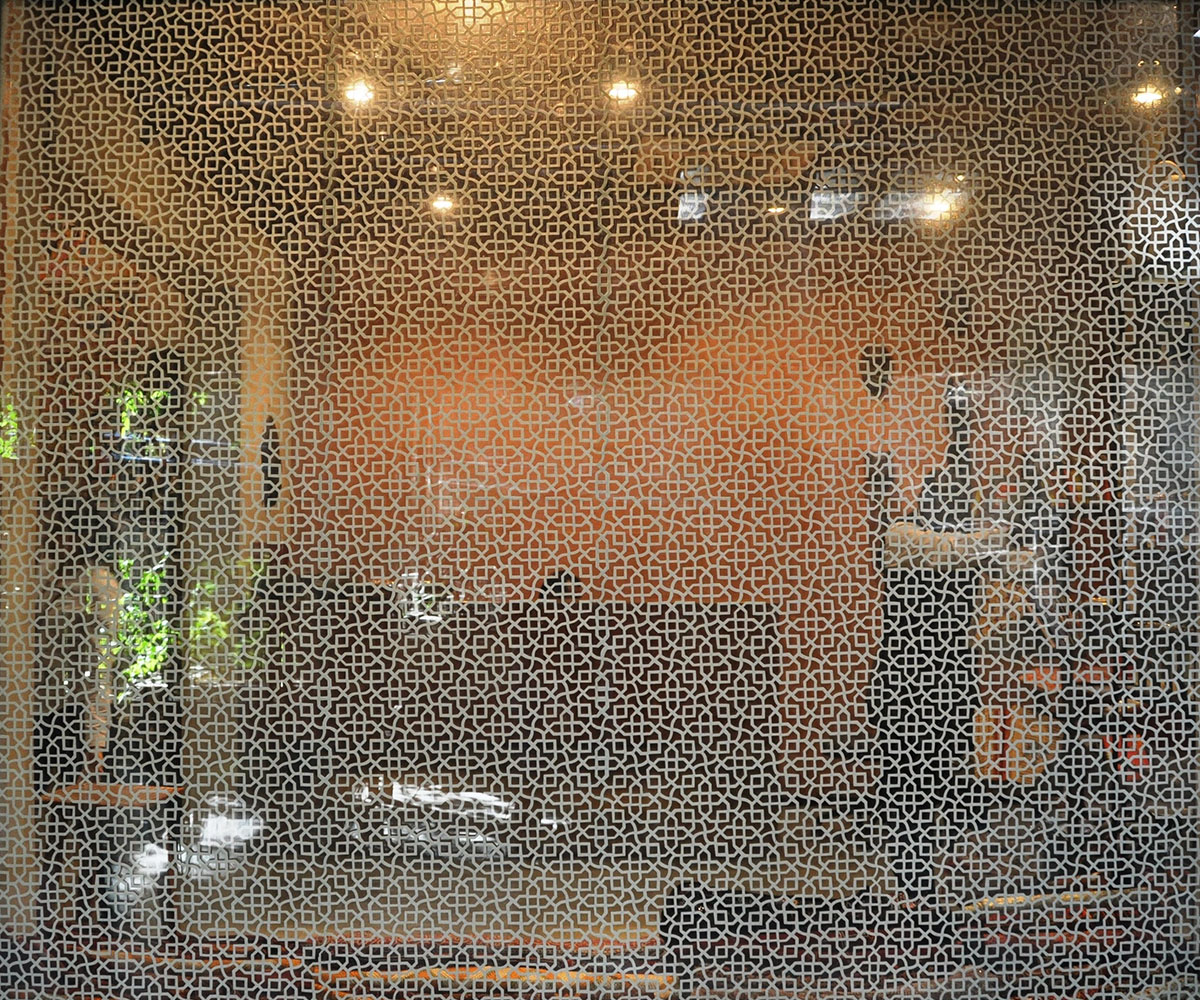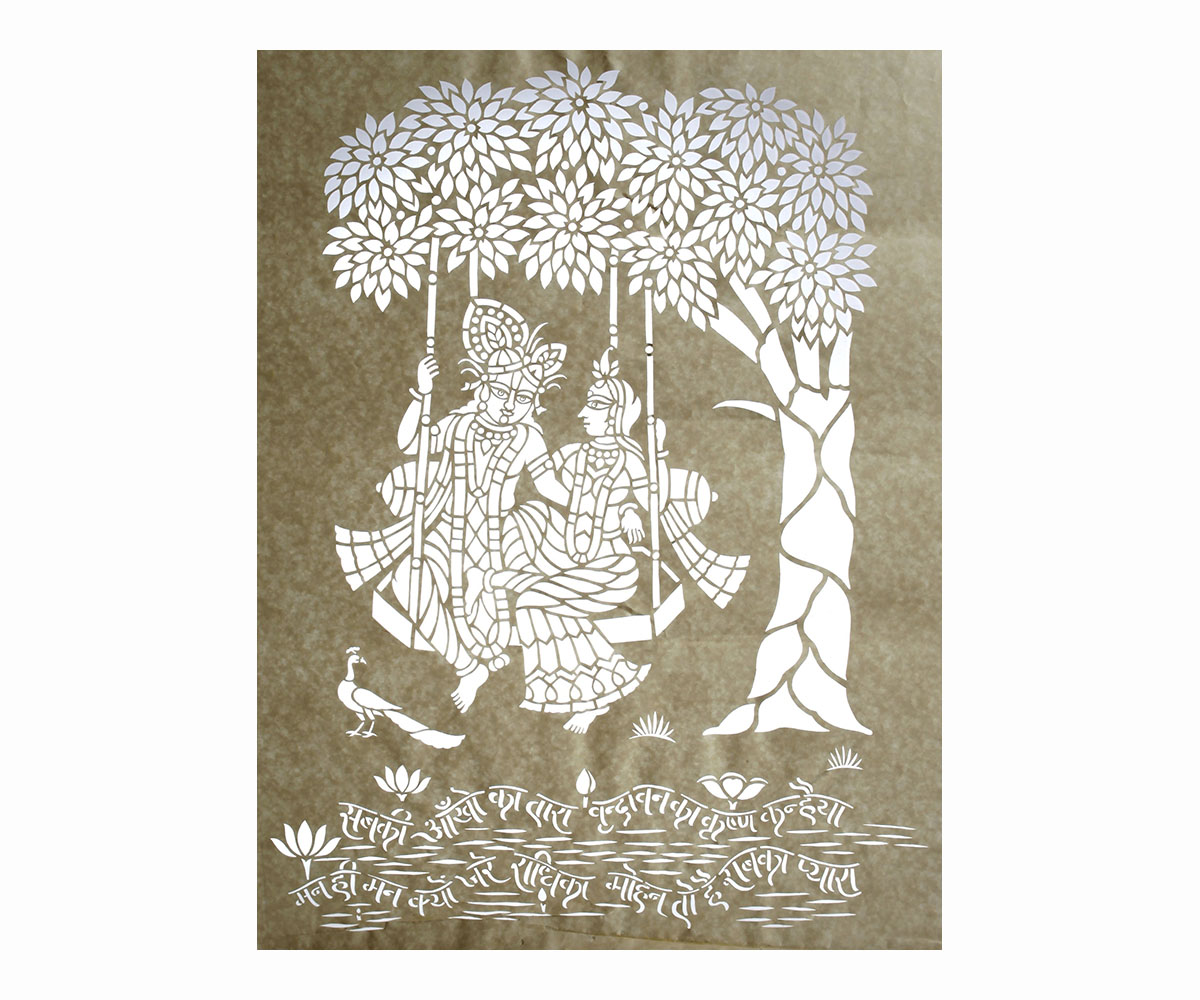ARTICLE
Sanjhi
An art of fine paper stencilling used to create rangoli using dry powders, flowers or crushed stone, sanjhi originated in Vrindavan and Mathura, Uttar Pradesh. The word sanjhi comes from the Hindi word sanjh, meaning “dusk”, referring to the time of the day when the sanjhi rangoli is normally created. Other accounts also link it to sajavat, meaning decoration, or sancha, meaning mould. Practitioners of the art form believe that it originated roughly four hundred years ago and is associated with the Vallabhacharya Sect of Vaishnavism.
To make a sanjhi one has to first create a rough outline of the motif and fill in the details before making the cuts. Through a concept known as chaski, a single composition may be divided into smaller units so that different colours can be used within different parts of the composition. The finished stencil is then carefully placed on the surface on which the design is to be created and coloured powders are pressed on it. Though common surfaces include walls and floors, in the case of the jal-sanjhi the stencil is placed on still water on which powder, talcum or chalk is sprinkled and then layered with coloured powders.
Initially the stencils would be created out of banana leaves and a metal clipper known as nunni, or burning incense sticks would be used to fashion the stencils. Subsequently, these changed to plastic, paper coated with wax and finally paper stencils with handmade paper, banana rice paper and jute paper being used the most along with a custom-designed pair of handmade metal scissors for cutting. Apart from depicting scenes from the life of Krishna, the motifs may also be influenced by nature, including trees and flowers. During the Mughal period, some sanjhi stencils were also inspired by Mughal motifs such as jaalis, geometric designs and the Tree of Life symbol.
Sanjhi is particularly popular during festivals such as Holi, Janmashtami and Jhulan, when it is used to decorate temple walls and floors, nat-mandirs (dance halls in Hindu temples) and kirtan sabhas (prayer halls). Sanjhis are also created every evening during Pitra Paksha in September or October, honouring one’s ancestors. These are created by priests or artisans on a raised platform made of mud and cow dung, known as a vedi. Traditionally, sanjhi created in non-temple spaces are created by unmarried girls who offer prayers to the goddess Sanjhi.
In recent times, the finished paper stencil is considered as much an artwork as the rangoli. The Delhi Crafts Council began working with sanjhi artisans in the 1990s hoping to revive and preserve the art form and collaborated with them on several exhibitions such as Kagaz (1990), Sanjhi Past Forward (2015) and Sanjhi Revisited (2017). The stencil and its motifs are also used to make objects to be sold commercially, such as lampshades, notebooks, wall decorations, etc.
Bibliography
Our website is currently undergoing maintenance and re-design, due to which we have had to take down some of our bibliographies. While these will be re-published shortly, you can request references for specific articles by writing to hellomapacademy@map-india.org.








